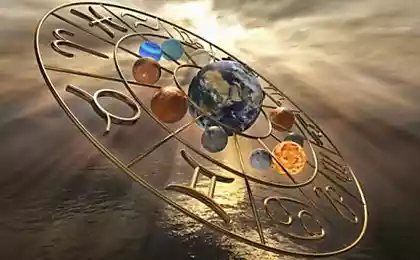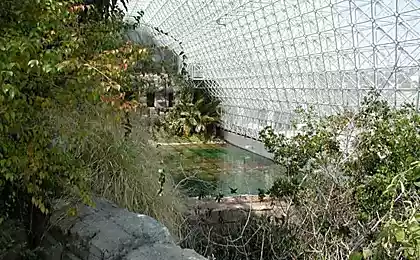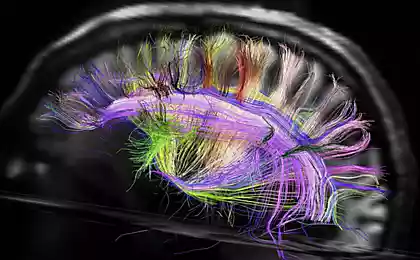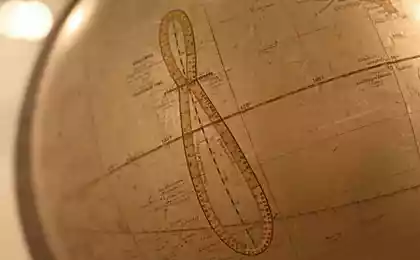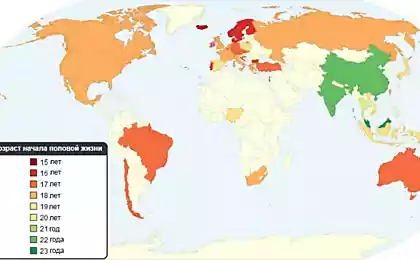547
Where there is life on earth: the famous map updated
Alfred Russell Wallace was one of the leading naturalists of the 19th century. He gave an independent description of the theory of evolution, although the more famous scientists working in this direction, is his contemporary Charles Darwin. Wallace, like Darwin, has affected the living creatures that he encountered while traveling the world. The result of these wanderings was to map the world's biodiversity, which radically changed the opinion of people of that time about the diversity of wildlife on Earth.
Now the map has been updated, it has made information about 20 thousands of species indicating habitat and ways to communicate with each other, says Ben Holt, a researcher from the University of Copenhagen, Denmark. It gives users the ability to see where they live in almost all species of amphibians, mammals and birds. An updated version was published on 20 December.
"Map summarizes all available information on how species are distributed and how they interact, he says. And consistency among the groups is quite amazing."
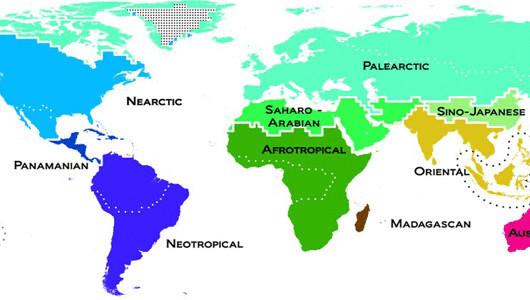
Regions in the southern hemisphere tend to show a unique abundance of animal communities. Particularly marked places such as Australia, Madagascar and South America. The diversity of life on the equator is not as striking. Scientists believe that this is due to the relative isolation of the regions South of the equator, and also with the uniqueness of the habitats, the abundance of rain and heat, namely the ingredients and necessary for a wide variety of life.
The map is created by applying data on the prevalence of the view of the globe with a coordinate grid. Every cell of the network introduced a list of types, then you can compare the lists of different cells, says Holt.
The resulting map divides nature into 11 extensive biogeographic zones and shows that they are all interrelated. On a modern map the genetic information which was not available at the time of Wallace. It has not yet entered data on reptiles, plants and insects, as they are not as thorough. But, as stated by the scientist, such data will be easy to make the map as soon as they become available.
Alfred Russell Wallace (1823-1913) – British Explorer, scientist and collector, whose theories about the propagation of life, or biogeography, has laid the Foundation for many fields of modern biological science.
"The original map of Wallace, no doubt, greatly contributed to the widespread study of global biodiversity, says Holt. This map shows the enormous progress we have made since the time of Wallace. In addition, it serves as a reminder that we still know little about the formation pathways of life."
Source: /users/104
Now the map has been updated, it has made information about 20 thousands of species indicating habitat and ways to communicate with each other, says Ben Holt, a researcher from the University of Copenhagen, Denmark. It gives users the ability to see where they live in almost all species of amphibians, mammals and birds. An updated version was published on 20 December.
"Map summarizes all available information on how species are distributed and how they interact, he says. And consistency among the groups is quite amazing."

Regions in the southern hemisphere tend to show a unique abundance of animal communities. Particularly marked places such as Australia, Madagascar and South America. The diversity of life on the equator is not as striking. Scientists believe that this is due to the relative isolation of the regions South of the equator, and also with the uniqueness of the habitats, the abundance of rain and heat, namely the ingredients and necessary for a wide variety of life.
The map is created by applying data on the prevalence of the view of the globe with a coordinate grid. Every cell of the network introduced a list of types, then you can compare the lists of different cells, says Holt.
The resulting map divides nature into 11 extensive biogeographic zones and shows that they are all interrelated. On a modern map the genetic information which was not available at the time of Wallace. It has not yet entered data on reptiles, plants and insects, as they are not as thorough. But, as stated by the scientist, such data will be easy to make the map as soon as they become available.
Alfred Russell Wallace (1823-1913) – British Explorer, scientist and collector, whose theories about the propagation of life, or biogeography, has laid the Foundation for many fields of modern biological science.
"The original map of Wallace, no doubt, greatly contributed to the widespread study of global biodiversity, says Holt. This map shows the enormous progress we have made since the time of Wallace. In addition, it serves as a reminder that we still know little about the formation pathways of life."
Source: /users/104



